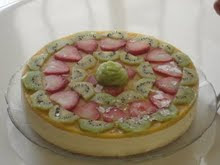
Date June 22, 2007
Brief More to coconuts than water
All the rest of the tree, too!
There is hardly anything growing on a coconut tree that does not have some use, making the total economic potential of the plant worldwide an immense figure. The tree is a source of food, wood
ALL THE REST of the tree, too!
There is hardly anything growing on a coconut tree that does not have some use, making the total economic potential of the plant worldwide an immense figure. The tree is a source of food, wood for building materials and crafts, and raw material for clothing and numerous industrial products.
Coconut as food has a long tradition in the Caribbean. It goes into serious things like cou-cou, rice and peas, soups, sauces, bread and cakes; and frivolous things like turnovers, sugar cakes, icecream, sweets.
Alternatively, we could classify the many food items containing coconut according to whether they are based on coconut milk and fresh coconut or on desiccated coconut since the production of these ingredient bases requires different processing operations leading to additional value added opportunities in coconut production.
Nata de coco (Sp.: cream of coconut) is a white to creamy yellow jelly-like substance consumed as a dessert and considered a health food because it contains no cholesterol and is high in natural dietary fibre.
Nata de coco is obtained, using technology originating in the Philippines, by reducing coconut water to a high concentration of sugar before adding vinegar and a starter culture and pouring the mixture into a mould for fermentation. There then follows a labour intensive process of repeated boiling and rinsing of the product to remove the acidity before serving.
Many of the confectionery items produced and consumed in the Caribbean are of variable quality, shelf-life and consistency.
The Food and Agriculture Organisation of the United Nations (FAO) has provided technical assistance in the region on appropriate processing technologies, proper processing techniques, appropriate quality control, quality assurance and good hygienic practices during processing, as well as packaging and labeling to guide small processors in improving the overall quality and shelf-life of their products. A technical guide on the subject is to be published shortly.
Coconut oil
The demand for edible coconut oil, traditionally produced through chemical refining, has been restricted by concerns about cholesterol levels. Studies of coconut-consuming populations have however shown that dietary coconut oil does not lead to high serum cholesterol or to high coronary heart disease.
Research has also been allaying fears by showing that, unique among vegetable oils, virgin cold pressed coconut oil is high in the medium chain fatty acids (MCFAs) that are readily digested. The major fatty acid in coconut, lauric acid, has antiviral and antibacterial functions. Lauric acid occurs in human breast milk and protects the intestines of babies from bacterial, viral and fungal infection until the immune system can fend for itself.
Interest in "designer" forms of coconut oil has increased. Of several methods of extracting virgin coconut oil (VCO), the least destructive methods rely on first grating and mixing the fresh coconut with water to produce coconut milk then using centrifugal separation of the oil from the mixture.
The oil is then heated to temperatures not exceeding 600 & deg;C to drive off the last of the moisture. VCO, which fetches much higher market prices than the traditional chemically refined coconut oil, is used primarily in pharmaceutical and cosmetic applications but is finding its way into organic food stores.
Coconut flour and coconut vinegar can both be produced from by-products of other processes - flour from the residue obtained after cold extraction of the oil, while vinegar is the fermented product of coconut water that is often discarded in copra production.
Coconut flour is high in fibre and low in fat and imparts a pleasant coconut flavour. It contains no gluten, the component in wheat flour that provides gas retaining properties, and so cannot completely replace wheat flour in products like bread that call for volume expansion. It can, however, complement wheat flour in baked, fried and steamed products at levels ranging between 15 and 25 per cent, depending on the type of product.
Coconut vinegar is produced by adding yeast and sugar to coconut water and allowing fermentation to occur. The resulting alcohol is then oxidized to vinegar. The end product is low in acidity with a unique coconut flavour and is a common ingredient in cooking and pickling.
Industrial use
There is still a large demand for chemically refined coconut oils, primarily in soap making. In the Caribbean, Dominica has been one of the notable success stories. More recently cocodiesel or coconut methyl ester, a diesel fuel substitute derived from chemically refined coconut oil, has found a place in the growing biofuel market.
Automobiles can run on coco-diesel without modifying or changing their diesel engines. Unmodified diesel engines could switch to a 10-20 per cent coco-diesel blend as an alternative fuel and experience no loss of power and performance.
Use of a one percent blend of coco-diesel increases mileage by ten per cent in cars, reducing harmful emissions from diesel engines.











No comments:
Post a Comment